Who are the Five Moons? Oklahoma's Native American ballerinas to be honored at festival
- Oops!Something went wrong.Please try again later.
- Oops!Something went wrong.Please try again later.
- Oops!Something went wrong.Please try again later.
Five Native American dancers from Oklahoma who took the international ballet world by storm in the 20th century are continuing to shine.
With their talent at lighting up stages, the ballerinas — Maria Tallchief, Marjorie Tallchief, Yvonne Chouteau, Moscelyne Larkin and Rosella Hightower — became known as the Five Moons.
The legacy of the trailblazing ballerinas will be honored at the second annual Five Moons Dance Festival Sept. 9-11 at the First Americans Museum and on the University of Oklahoma Norman campus.
Hosted by the OU School of Dance, the three-day event was created not only to celebrate the achievements of the Five Moons but also to provide a platform for female choreographers from historically underrepresented populations.
This year’s festival will spotlight Larkin, with performing groups to include the Tulsa Ballet, Oklahoma City Ballet, Eastern Shawnee Stomp Dancers, Peoria Children’s Choir and students from the OU School of Dance. Featured choreographers will include Sidra Bell, Robyn Mineko Williams and OU alumna Maggie Boyett.
This year's Five Moons Dance Festival kicks off just days after the U.S. Mint revealed the design for an upcoming quarter featuring Maria Tallchief. Due out in 2023, the Maria Tallchief Quarter is the 10th coin in the American Women Quarters Program.
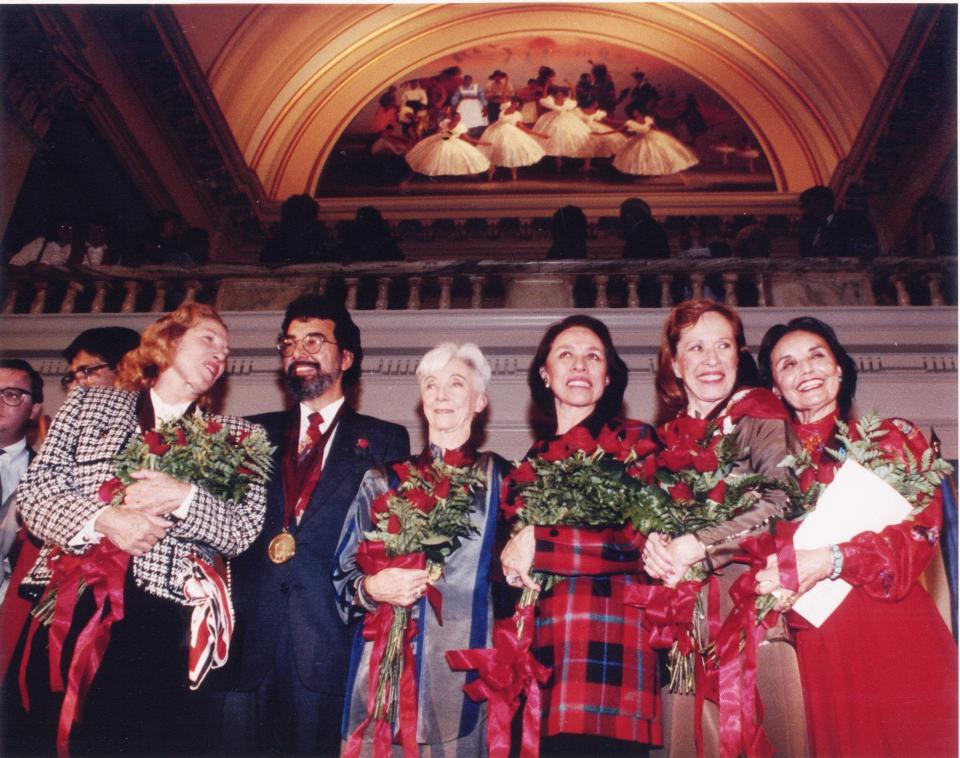
Why are they called the Five Moons?
The moniker “Five Moons” evolved from the Oklahoma Indian Ballerina Festivals that took place in 1957 and 1967 to celebrate the 50th and 60th anniversaries of Oklahoma statehood. The 1967 festival included a ballet created by Cherokee composer Louis Ballard Sr. called "The Four Moons" performed by four of the five ballerinas — Maria Tallchief had already retired from performing — featuring solos honoring each dancer's heritage.
Oklahoma Native American artist Jerome Tiger (Muscogee and Seminole) created a painting for the program cover titled "The Four Moons." Chickasaw painter Mike Larsen went on to depict the Five Moons in a mural in the state Capitol rotunda; titled "Flight of Spirit," it was dedicated in 1991.
In 1997, the ballerinas returned to the state Capitol to be named Oklahoma Cultural Treasures. A decade later, a group of bronze sculptures titled “The Five Moons” by artists Gary Henson and Monte England was unveiled at the Tulsa Historical Society. Henson is working to restore the Marjorie Tallchief statue after thieves stole it and cut it into pieces earlier this year.
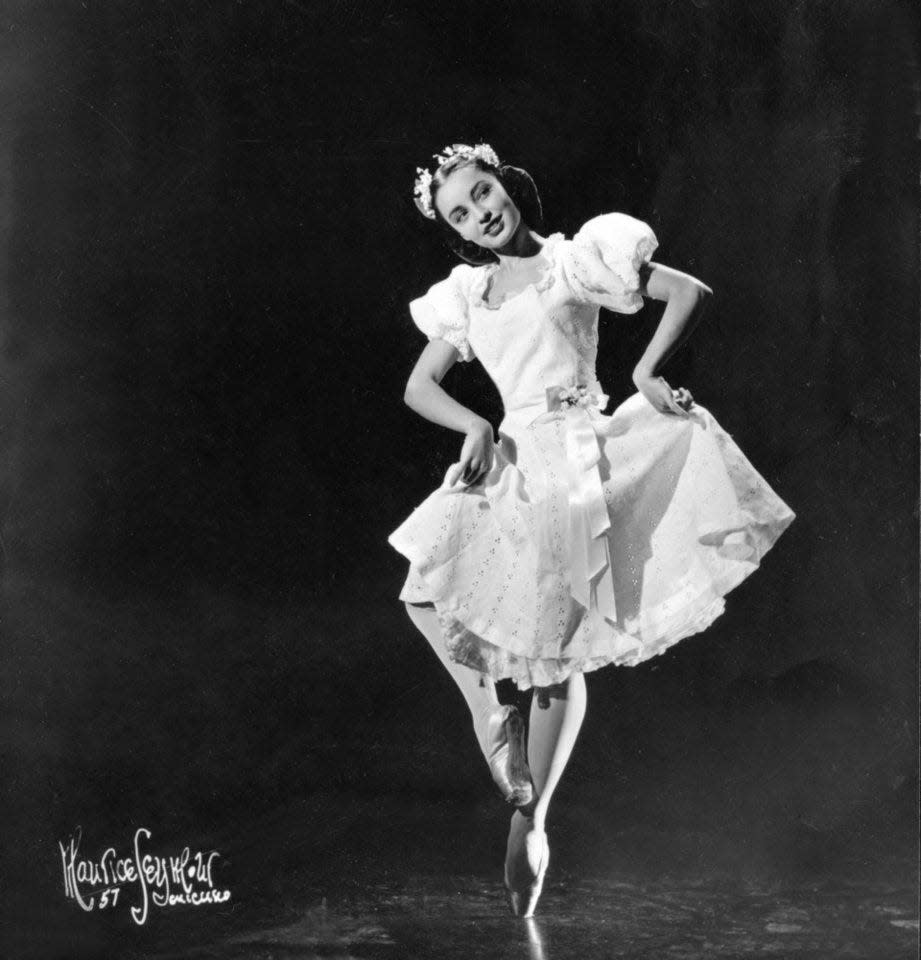
Who was Moscelyne Larkin?
Moscelyne Larkin was born in 1925, in Miami, Oklahoma, as the only child of Eva Matlagova-Larkin, a dancer from Russia, and Ruben Larkin, a member of the Shawnee-Peoria tribe.
At 15, she joined the Original Ballet Russe. Larkin met her husband, Roman Jasinski, a premier danseur, while she was dancing for the Ballet Russe. They married in 1943.
The couple moved to the United States, where they joined the Ballet Russe de Monte Carlo.
Famous for her high jumps and fast turns, Larkin danced leading roles in ballets like "Rodeo," "Swan Lake" and "Scheherazade."
After their son Roman was born, the family moved to Tulsa in 1954 and established Tulsa Ballet in 1956.
The couple's lifelong contributions to dance were recognized with the Dance Magazine Award in 1988.
Larkin died in 2012 at age 87.
In honor of Larkin, the Shawnee variation from "The Four Moons" will be performed by an OU dance student at this year's Five Moons Festival.
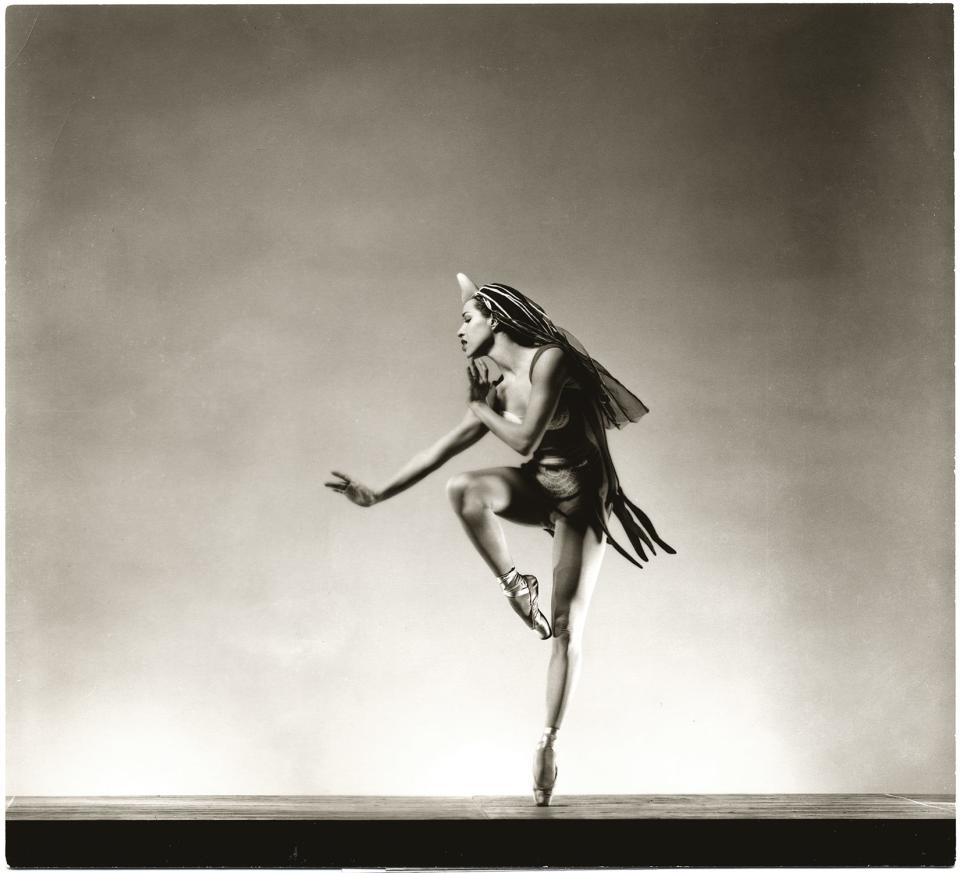
Who was Maria Tallchief?
Born in Fairfax in 1925, Elizabeth Maria Tallchief (Osage) — known to her family as Betty Marie — is regarded as America’s first prima ballerina.
From her start dancing in her father’s movie theater with her sister in their hometown, Tallchief performed all over the world, raised the profile of American ballet on the international stage and helped popularize ballet in the United States.
Her family moved to California when she was 8, and after high school, Tallchief traveled to New York and started as an apprentice with the Ballet Russe de Monte Carlo.
In 1944, Russian choreographer George Balanchine joined Ballet Russe, and he and Tallchief married in 1946. In 1947, after becoming the first American to dance with the Paris Opera Ballet, Tallchief was named the first prima ballerina of what would evolve into the New York City Ballet.
Their marriage ended in 1951, but they proved successful collaborators: Balanchine choreographed leading parts for her in several ballets, including "Swan Lake," "The Nutcracker" and "The Firebird."
Tallchief retired from the stage in 1966 and settled in Chicago, where she directed Chicago's Lyric Opera Ballet from 1973 to 1979 and the Chicago City Ballet from 1980 to 1987.
Before she died in 2013 at the age of 88, Tallchief became the first Oklahoma native lauded at the Kennedy Center Honors in 1996 and received a National Medal of Arts in 1999.
She was also given the name "Wa-Xthe-Thonba," or "Woman of Two Standards," by the Osage Nation.
Written in Osage orthography, her Osage name will be featured on the reverse, or tails, side of the Maria Tallchief Quarter, along with a depiction of the dancer leaping. The 10th coin in the American Women Quarters Program, the Tallchief quarter is due to be issued in 2023.
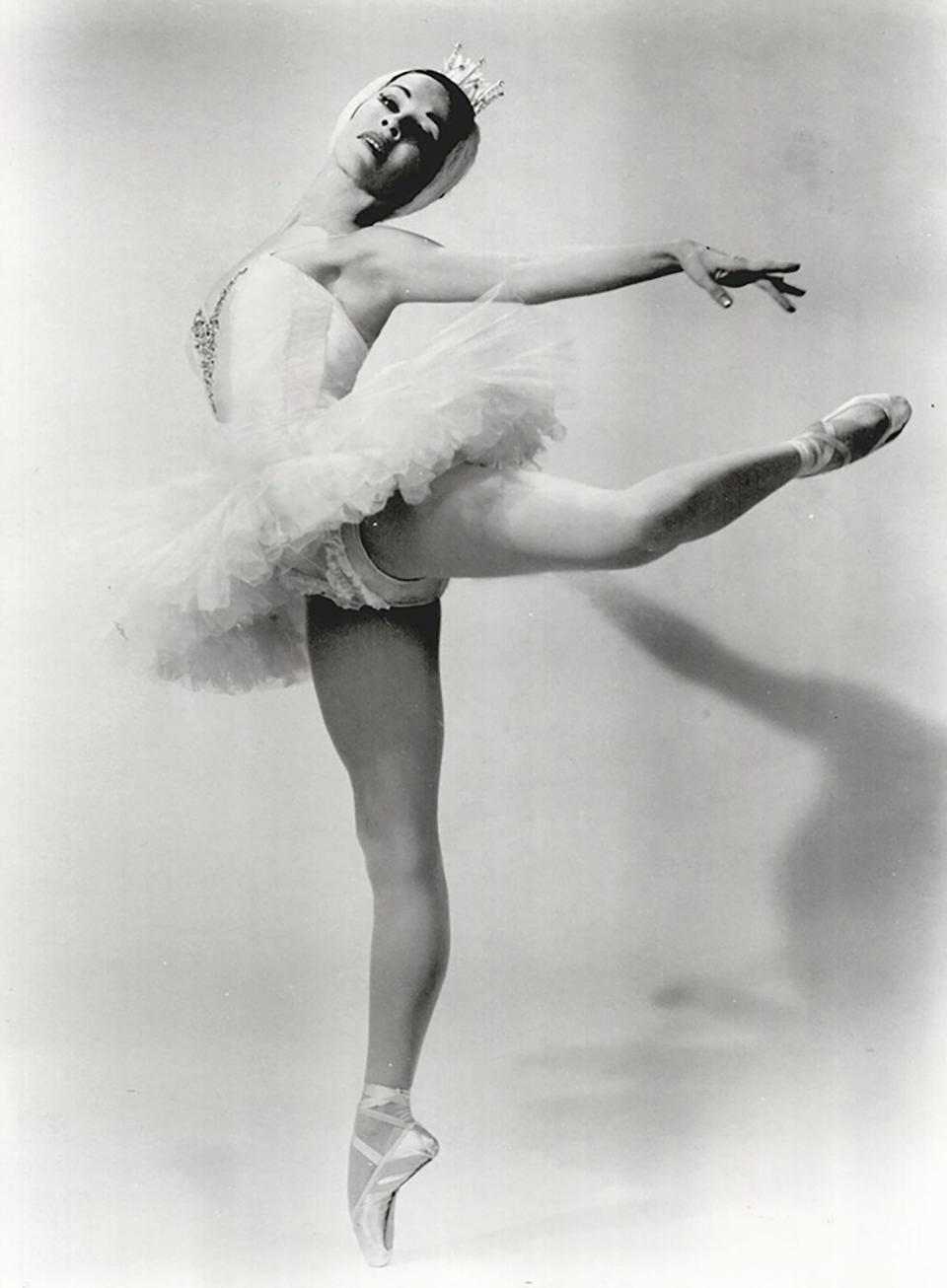
Who was Marjorie Tallchief?
The younger sister of Maria Tallchief, Marjorie Tallchief (Osage) was born in 1926 in Denver, Colorado, during a family vacation and grew up in Fairfax until the family moved to California when she was a girl.
She performed with several dance companies, including the American Ballet Russe de Monte Carlo, the Grand Ballet du Marquis de Cuevas and Ruth Page's Chicago Opera Ballet. She joined the Paris Opéra Ballet in 1957, and she was the first American ever to become première danseuse étoile, or "star dancer," the highest rank a performer can reach in the legendary company.
Best known for her roles in ballets like "Romeo and Juliet," "Giselle" and "Idylle" — the latter was choreographed by her husband, choreographer George Skibine — Tallchief was prima ballerina with New York's Harkness Ballet from 1964 until 1966, when she retired from the stage.
She subsequently taught at the Dallas Civic Ballet Academy and acted as a dance director for the Dallas Ballet. In 1980, she helped her sister establish and taught at the Chicago City Ballet.
From 1989 to 1993, Tallchief worked as director of dance at the Harid Conservatory in Boca Raton, Florida. She was presented with a distinguished service award from the University of Oklahoma in 1992 and was named one of the “50 Most Influential Oklahomans of the 20th Century” in 2000.
Tallchief was the last surviving member of the Five Moons until she died Nov. 30, 2021, at the age of 95, at her home in Delray Beach, Florida.
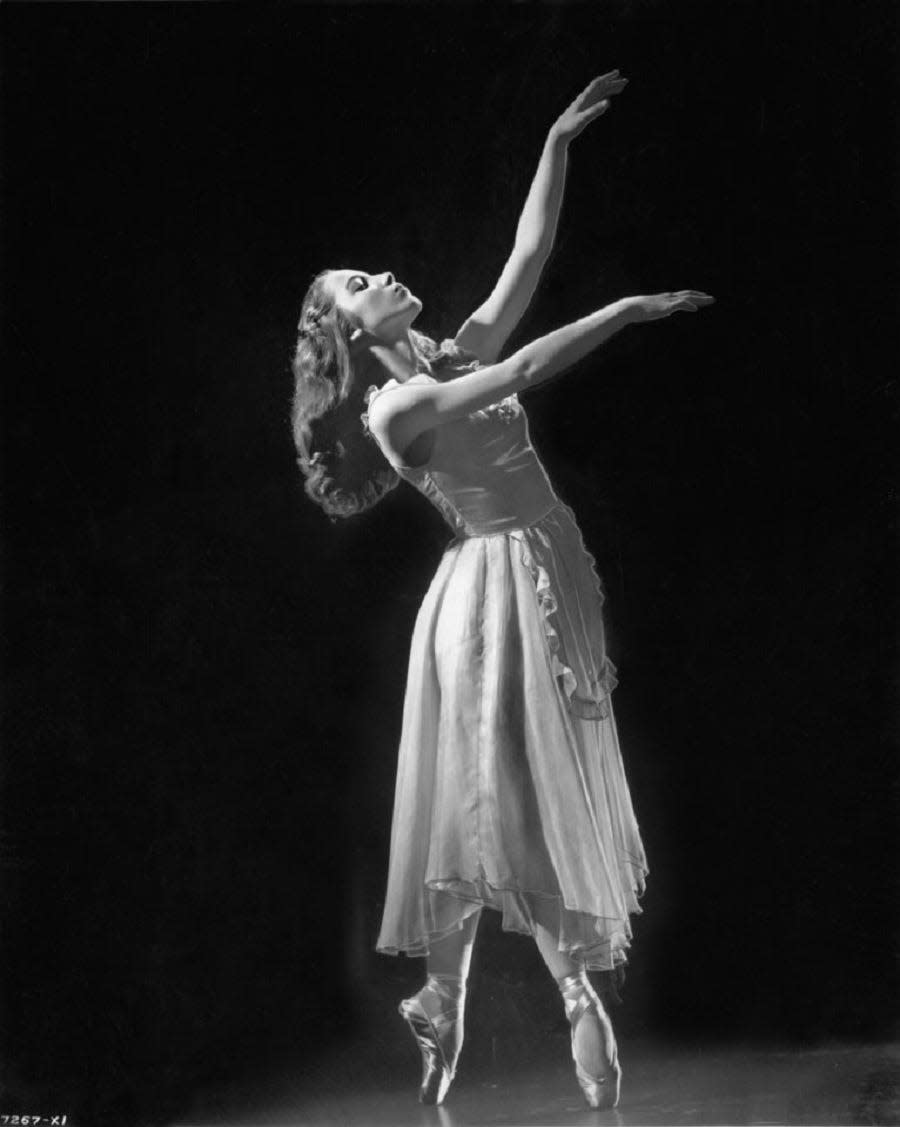
Who was Yvonne Chouteau?
Yvonne Chouteau (Shawnee and Cherokee) was born Myra Yvonne Chouteau in 1929 in Ft. Worth, Texas, and grew up in Vinita. Inspired to dance at age 4 after seeing legendary ballerina Alexandra Danilova perform in Oklahoma City, she studied at the School of American Ballet in New York.
She danced with the celebrated company for 14 years, performing in “Giselle,” “The Nutcracker,” “Romeo and Juliet” and more. Her most recognized role was as the Glove Seller in “Gaite Parisienne."
She married Miguel Terekhov, a principal dancer with the Ballet Russe de Monte Carlo, in 1956. In 1960, they became artists in residence at OU, where they founded the School of Dance in 1961. Two years later, they organized the Oklahoma City Civic Ballet, which they ran for 10 years. It was the precursor to Oklahoma City Ballet.
Chouteau died in Oklahoma City in 2016. She was 86.
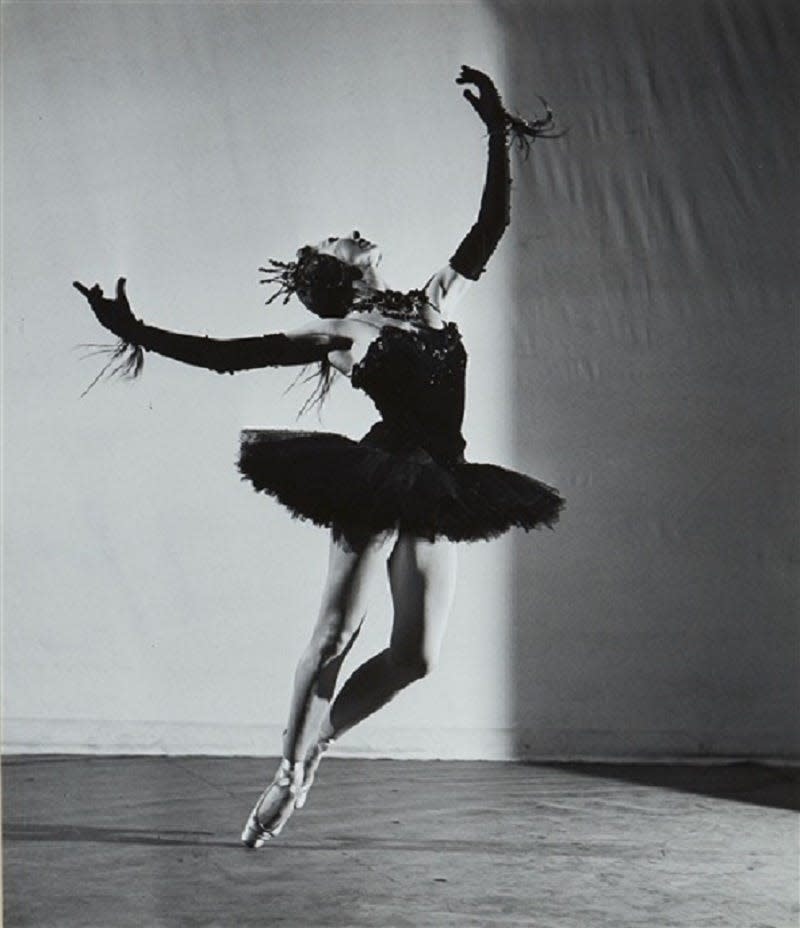
Who was Rosella Hightower?
Rosella Hightower, who was Choctaw, was born in 1920 in Durwood. After a 1937 trip to France, she became a member of the Ballet Russe de Monte Carlo. She also danced with the Original Ballet Russe, Grand Ballet du Marquis de Cuevas and American Ballet Theatre.
She was known for featured roles in “Swan Lake,” “Giselle” and “Don Quixote.”
Hightower opened the Ecole Superieure de Danse de Cannes (the Center for Classical Dance), which became one of Europe’s leading ballet schools, in 1962 in Cannes, France.
She also worked with the Marseilles Ballet and La Scala Ballet.
She received France's top honor, Chevalier de la Légion d'Honneur, in 1975, and she became the first American director of the Paris Opera Ballet in 1981.
She died in 2008, at her home in Cannes. She was 88.
Five Moons Dance Festival
When: Sept. 9-11.
Where: First Americans Museum and University of Oklahoma Norman campus.
Opening reception: 6:30 p.m. Sept. 9, First Americans Museum.
Free symposium: 10 a.m. to 3 p.m. Sept. 10, First Americans Museum.
Stage performance: 3 p.m. Sept. 11, OU's Reynolds Performing Arts Center, 560 Parrington Oval, Norman.
Information and tickets: http://dance.ou.edu/fivemoonsfest.
Features Writer Brandy "BAM" McDonnell has covered Oklahoma's arts, entertainment and cultural sectors for The Oklahoman for 20 years. Reach her at bmcdonnell@oklahoman.com, www.facebook.com/brandybammcdonnell and twitter.com/BAMOK. Support her work by signing up for her See & Do Oklahoma newsletter and subscribing to The Oklahoman.
This article originally appeared on Oklahoman: Get to know the Five Moons, Oklahoma's Native American ballerinas

